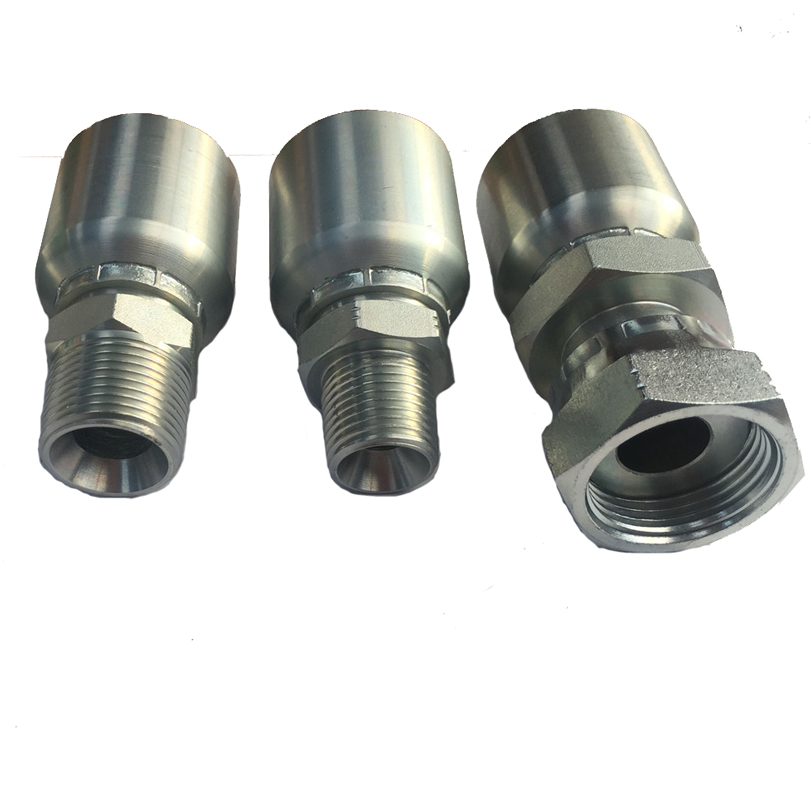335345435
Aug . 12, 2024 03:54 Back to list
Best Practices for Connecting Hydraulic Hoses Safely and Efficiently in Industrial Applications
Connecting Hydraulic Hoses A Comprehensive Guide
Hydraulic systems are prevalent in various industries, including construction, manufacturing, and automotive, due to their efficiency and power transmission capabilities. Central to these systems are hydraulic hoses, which are designed to transport pressurized fluid, enabling machinery to operate effectively. Understanding how to properly connect hydraulic hoses is crucial for maintaining system efficiency, preventing leaks, and ensuring safety.
Basics of Hydraulic Hoses
Hydraulic hoses are typically made from layers of synthetic rubber, steel wire, and other materials, which work together to withstand high pressures. These hoses come in various sizes and specifications, tailored for specific applications. Common standards include SAE (Society of Automotive Engineers) and ISO (International Organization for Standardization), which provide guidelines on the dimensions, performance, and testing of hydraulic hoses.
Before connecting hydraulic hoses, it's essential to select the right type for the job. Factors such as fluid type, temperature, pressure rating, and environment should be considered. Using the wrong hose can lead to premature failures, leaks, and potentially hazardous situations.
Steps to Connect Hydraulic Hoses
1. Preparation Before you start connecting hydraulic hoses, ensure that the equipment is powered off and depressurized. Safety should always be the first priority. Wear appropriate personal protective equipment (PPE) such as gloves and goggles to prevent injuries.
2. Inspect Hoses and Fittings Check both hoses and fittings for any signs of wear, damage, or contamination. Look for cracks, bulges, or kinks in the hose, and ensure that the fittings are clean and free from debris. Any defects can compromise the connection and lead to leaks.
connecting hydraulic hoses

3. Choosing the Right Fittings Hydraulic hoses are equipped with specific fittings that determine how they connect to other components. Common types include JIC (Joint Industry Council) and NPT (National Pipe Thread) fittings. Ensure that the fittings match the hose type and are appropriate for the working pressure.
4. Aligning Hoses When connecting hoses, ensure that they align properly with their respective fittings. Avoid twisting or bending the hoses excessively, as this can damage the internal structure of the hose over time.
5. Connecting the Fittings For threaded fittings, use the appropriate tools to tighten them securely. Be cautious not to overtighten, as this can strip the threads or damage the fitting. For crimped fittings, make sure that the crimping tool is suitable for the size and type of hose you are working with.
6. Testing for Leaks Once connected, it’s vital to test the system for leaks. Gradually pressurize the system while inspecting the connections for any signs of fluid escaping. If leaks are found, depressurize the system, and recheck the connections.
7. Routine Maintenance Regular inspections of hydraulic hoses and connections can prevent unexpected failures. Look for signs of wear, and replace hoses that are nearing the end of their service life.
Conclusion
Connecting hydraulic hoses is a task that requires careful attention to detail and an understanding of both the components and principles involved in hydraulic systems. Proper connections ensure efficient operation and safety in hydraulic applications. By following the outlined steps and conducting regular maintenance, operators can enhance the reliability of their hydraulic systems and mitigate the risk of costly downtime or accidents. Understanding the intricacies of hydraulic hose connections is not just a technical requirement; it is a vital part of ensuring operational excellence in any industry that relies on hydraulic power.
-
SAE 100 R17 Black Smooth Cover Hydraulic Hose
NewsMar.07,2025
-
SAE 100 R17 Black Smooth Cover Hydraulic Hose
NewsMar.07,2025
-
SAE 100 R17 Black Smooth Cover Hydraulic Hose
NewsMar.07,2025
-
SAE 100 R17 Black Smooth Cover Hydraulic Hose
NewsMar.07,2025
-
SAE 100 R17 Black Smooth Cover Hydraulic Hose
NewsMar.07,2025
-
steel wire braided hydraulic hose
NewsMar.07,2025



